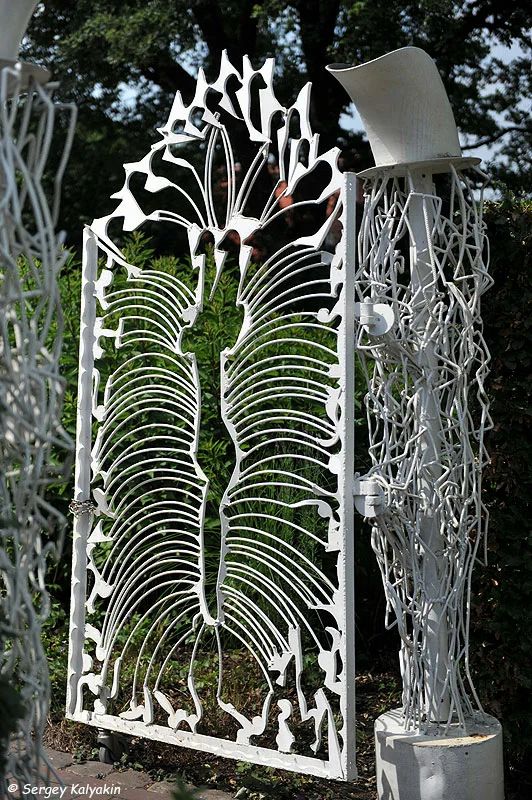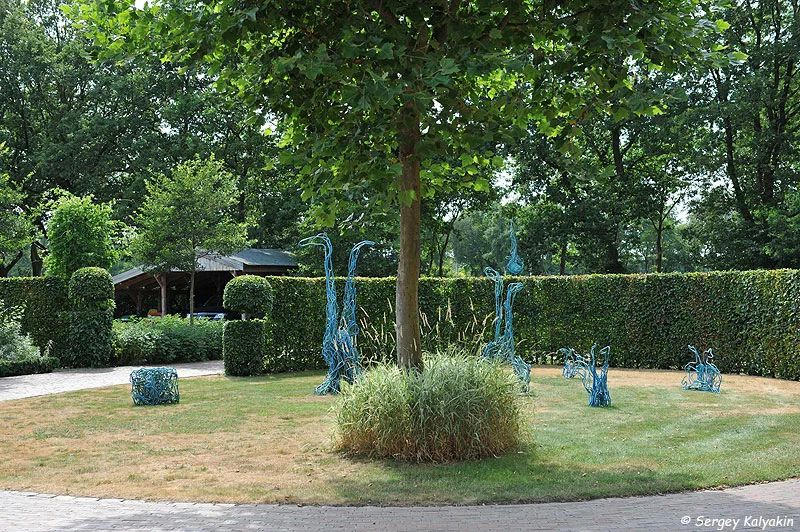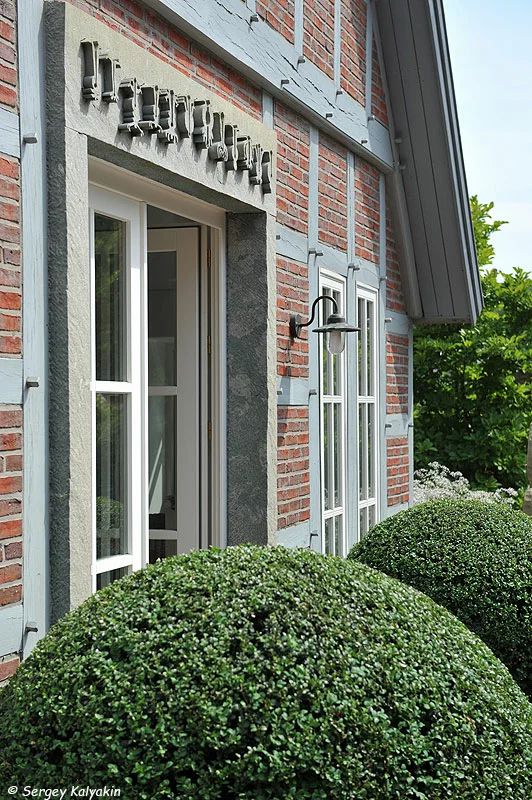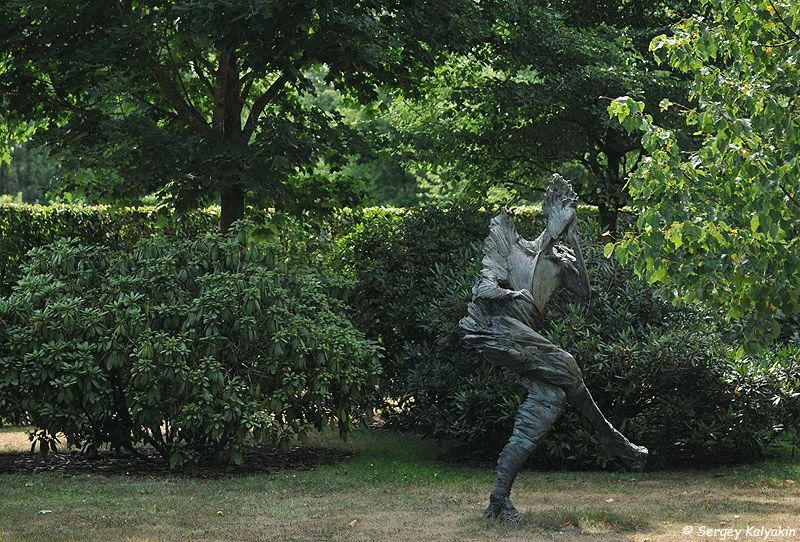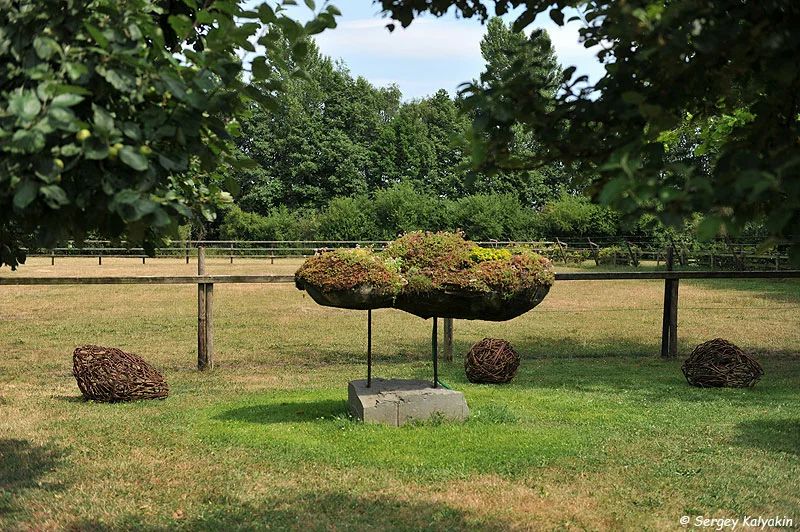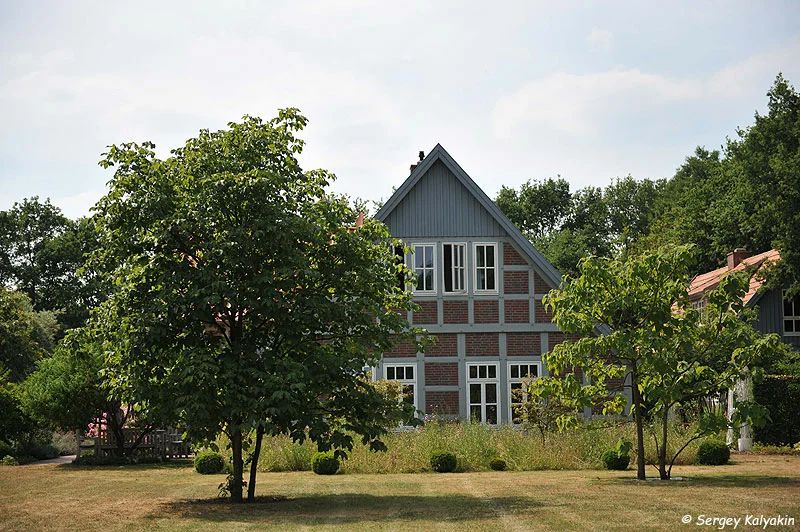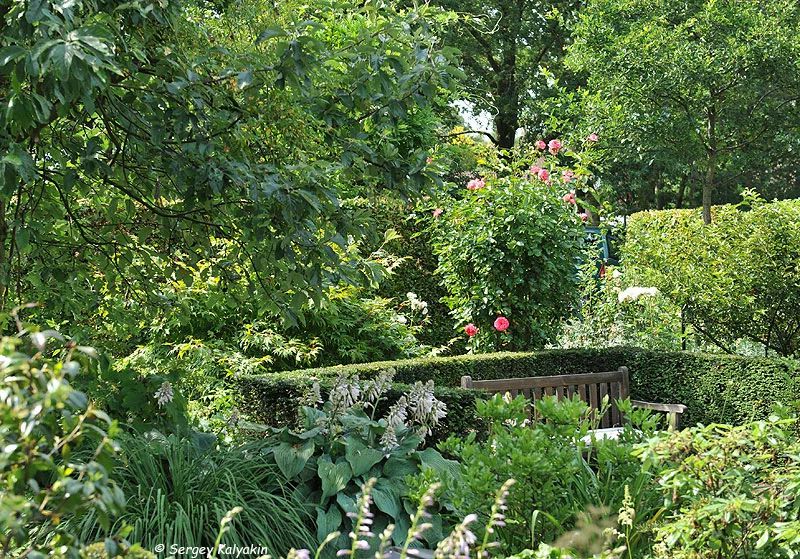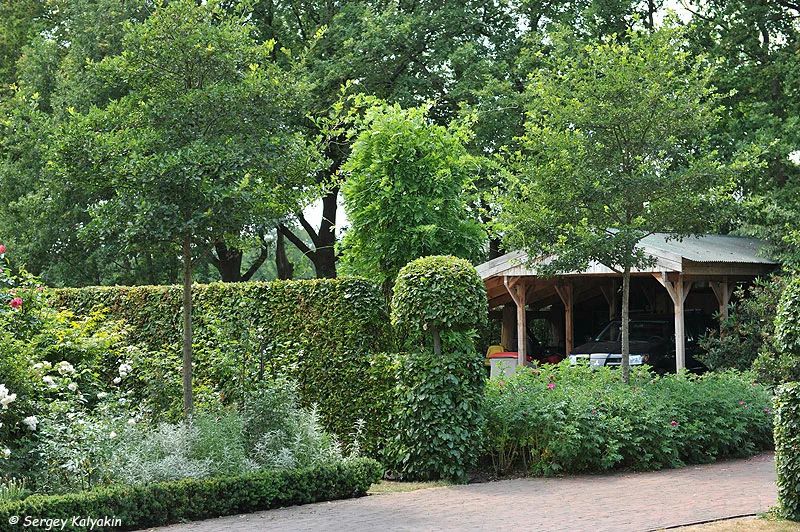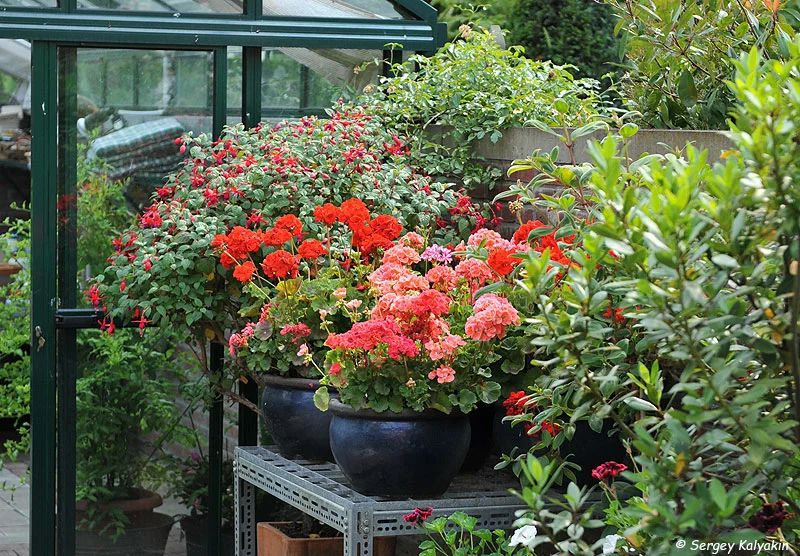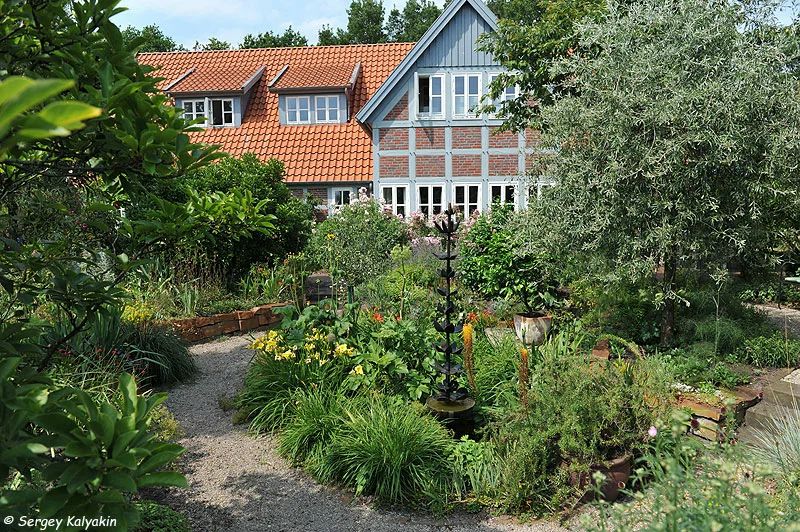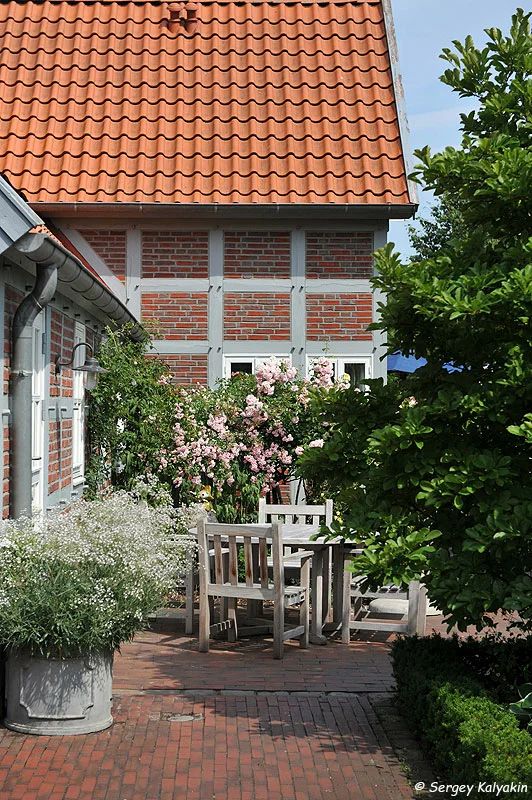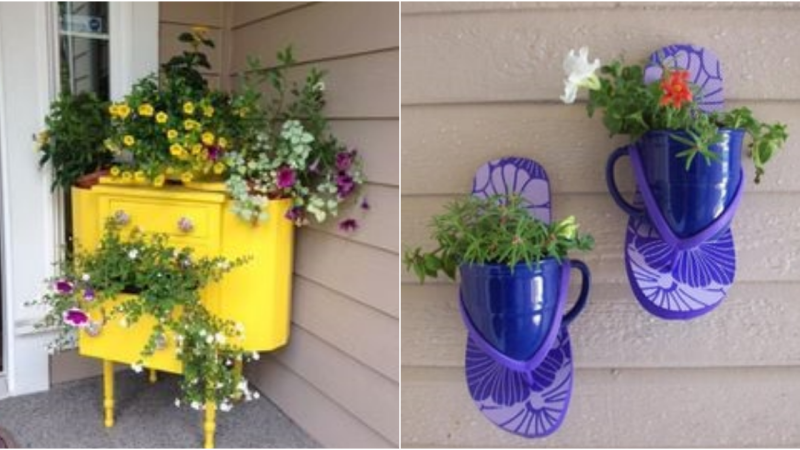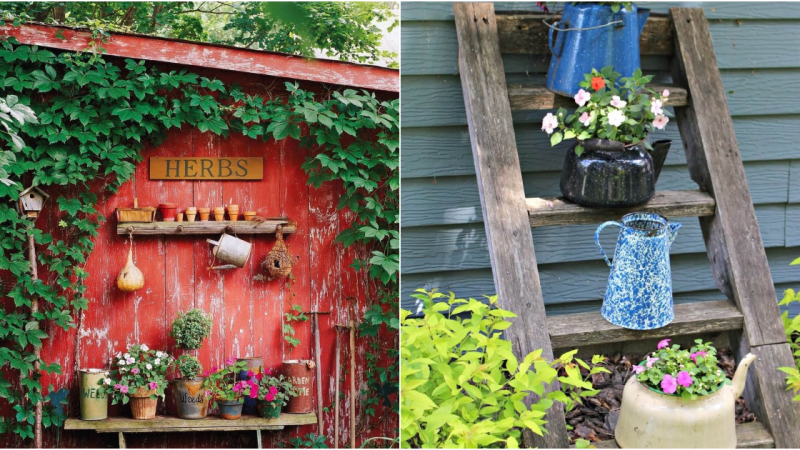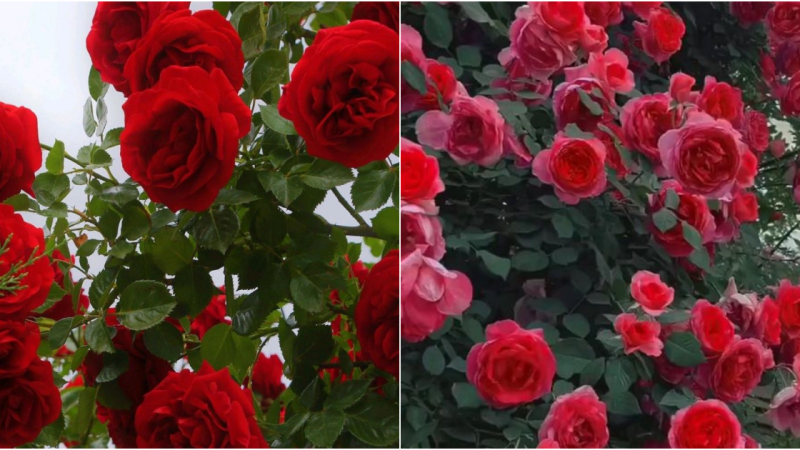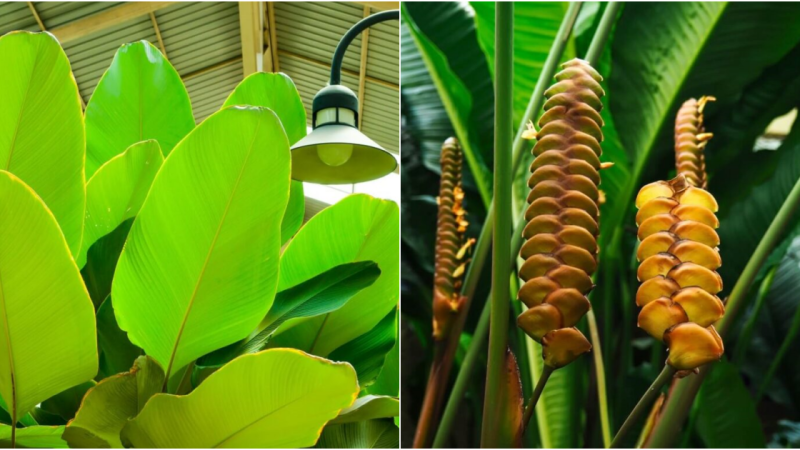A Fusion of Art and Landscape in Garden
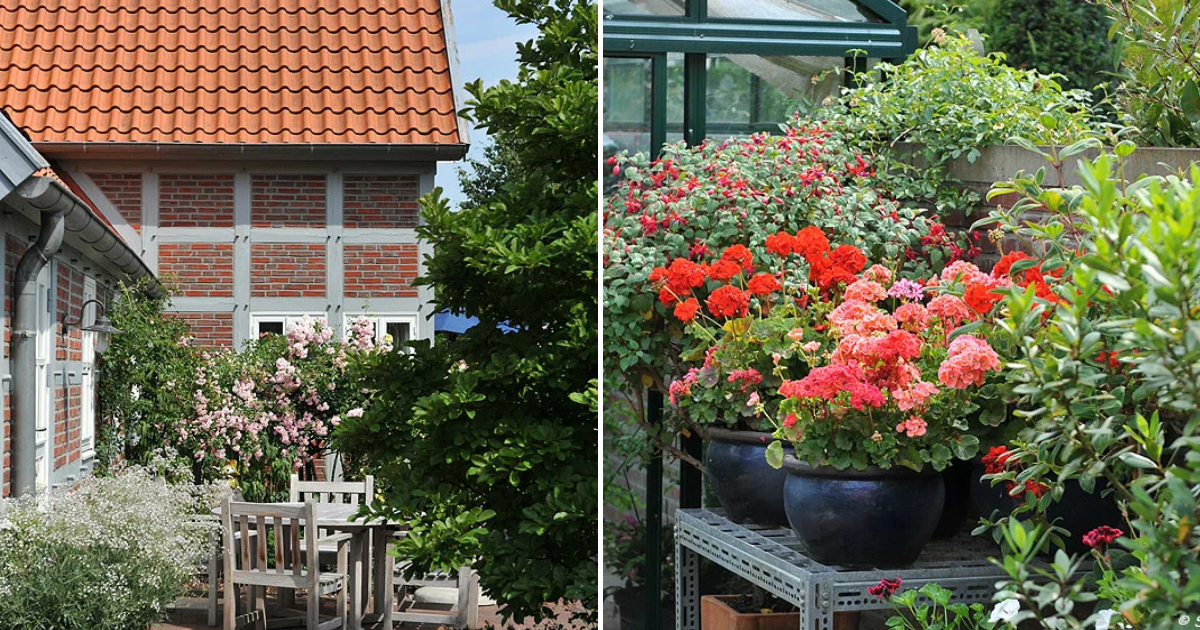
“Initially, we tried to keep the lawn green, but it’s impossible when there hasn’t been a drop of rain for two months,” Inza Winkler explained while giving a tour of the garden in forty-degree heat.
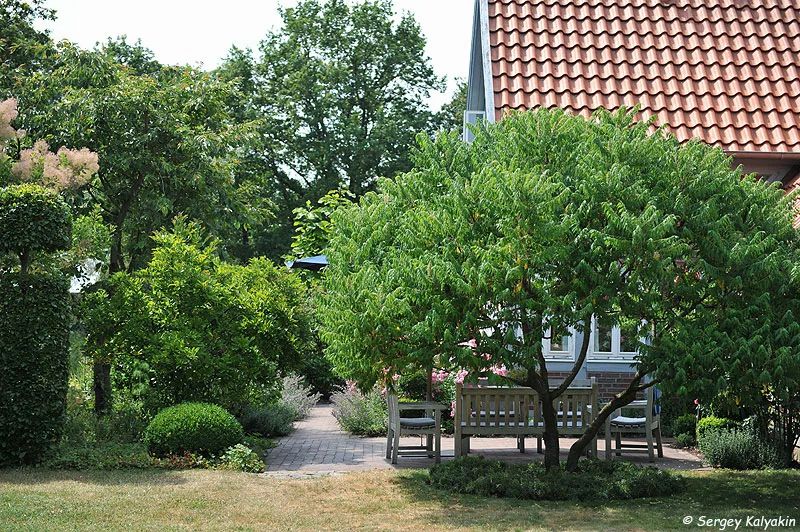
This garden boasts a fantastic number of small architectural structures per unit area. Inza Winkler, a sculptor by profession, and her parents, Lisa and Joachim Winkler, landscape architects, strive to merge art and landscape, and their garden can be considered the result of such a symbiosis. Joachim has a greater love for dendrology, Lisa for garden design, and Inza for sculpture.
It seems that Inza’s abstract sculptures grow straight from the ground. She loves to quote the idea of philosopher Albertus Magnus, a follower of Aristotle, who wrote, “Roots are the mouth of the plant.” At first, she created “growing” metal sculptures by turning them upside down so that the roots were at the top.
Then she came up with a more conceptual piece – a plant alphabet. These signs reflect the work of roots and foliage and are crafted using a water-cut stone technique.
Additionally, the garden displays works by Inza’s friend, Swedish sculptor Richard Brixel.
Inza Winkler believes that any non-trivial idea can be a source of inspiration. Take, for example, the Tamagotchi – a Japanese toy that requires regular attention. Inza created a Tamagotchi garden with plants on a metal frame that needs constant care. Another art piece, “Galaxy,” looks like a small planet. The idea was born when she observed the growth pattern of one of the Earth’s oldest residents, moss. Depending on the season and lighting, the surface of the “planet” on which it lives changes unrecognizably. It is particularly beautiful in winter when the moss turns green.
Wordplay can also be a stimulus for creativity. Near her workshop – which she jokingly calls “datscha” – stands the sculpture “River Bed.” It is a bed frame planted with sedum on both sides, with a stream of water “flowing” in the middle.
The Winklers’ garden was created on the site of a natural meadow occupying about a hectare. There was not a single tree here, only centuries-old oaks along the borders. The first thing Lisa and Joachim did twenty-two years ago was to establish the garden. They planted living hedges before the houses were built – a half-timbered house where the Winklers live and an art salon located nearby.
Of course, from the very beginning, they tried to divide the garden into separate spaces because such a large plot, in their opinion, needed zoning. The living hedges divide the area into zones and protect against the wind, as occasional hurricanes occur in the region. So the hedges provide a favorable microclimate for the garden.
Two garden zones require intensive care. One of them is the white formal garden, or at least that was the intention. But from the very beginning, things didn’t go quite as planned. As a housewarming gift, the Winklers received a tall stela and a white rose, and they thought it was the perfect place for them. When the flowers bloomed… red ones, they decided not to replant the rose. Additionally, birds spread seeds, so every year, something of a completely different color grows in the white garden. Nevertheless, the foundation is still white and green. Like throughout the entire plot, various sculptures are placed in the white garden, including living ones, shaped from yew.
On one side, the white garden is bordered by a brick wall, which serves as a good background for plantings and helps conceal the greenhouse behind it. In summer, tomatoes are grown in the greenhouse, and in winter, container plants from the Mediterranean garden are kept there – citrus trees, figs, olives, rosemary, oleander, passionflower, laurel, and geraniums.
The Winklers’ eternal dream was to have a sunken garden with a southern flair. They dug and filled the area in front of the house with Anröchter limestone. Just four steps and a few strides on the gravel, and you’re in the center of the terrace, by the murmuring fountain. Trees with unusually colored foliage form the “skeleton” of this garden. In Mediterranean countries, plants have something shiny, light, and whimsical in their appearance. The Winklers attempted to bring this southern touch to their garden in northern Germany. Here, you’ll find tamarisk, buddleia, narrow-leaved loquat, silver-leaved pear, purple smoke tree, magnolia, and Judas tree.
Something is always in bloom in this garden all year round. Early spring begins with bulbs, and various perennials “play” here until late autumn. On elevated flower beds, surrounded by dry-stone retaining walls, you’ll find daylilies, lavender, sage, kniphofias, agapanthus, bergenia, and centranthus. Of course, there are peaks of decorative appeal when oriental poppies and irises bloom – such a change of colors is simply mesmerizing.
The small boxwood spheres by the house indicate the boundaries of the parterre in the Winkler style. In Germany, one often encounters luxurious parterres in gardens of castles, always planted with vibrant flowers. The Winklers did just the opposite – a “wild” parterre, reminiscent of the natural meadow that was here before the garden. It allows all the plants that want to be present.
